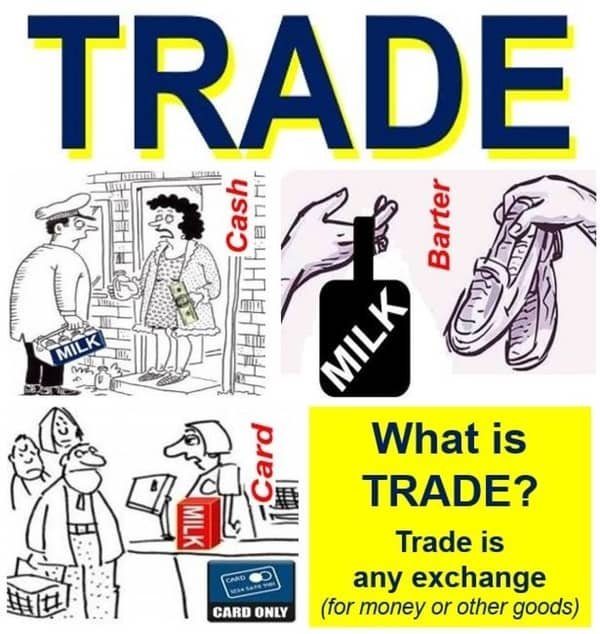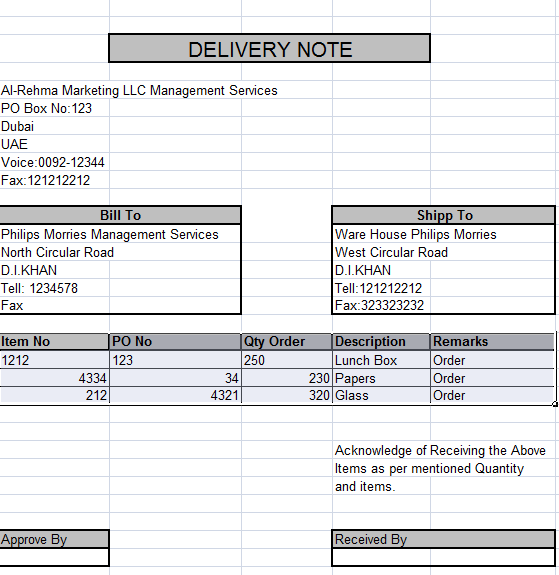Back to: COMMERCE SS2
Welcome to Class !!
We are eager to have you join us !!
In today’s Commerce class, We will be learning about Main Documents Used in Purchase and Sale Of Goods. We hope you enjoy the class!

CONTENT
- Steps involved in the purchase and sale of goods under home trade
- Documents exchanged between buyers and sellers – their features and uses.
NOTES
Trade between the wholesalers and the retailers has a number of vital stages involving the use of some important documents. All commercial transactions are recorded by the issue of an appropriate document and copies are kept as evidence of the transaction.
The major stages involved and the documents used in home trade (i.e. trade between wholesalers and retailers) are:
STEP 1: TRADE JOURNALS: These are publications which serve as sources of information to the buyer. It usually specializes in a particular product. There are trade journals that also feature general wholesale trading.
STEP 2: INQUIRY: (or ENQUIRY): A retailer may write a letter of inquiry to the wholesaler to ask for particulars of the goods required, price list of goods required, details of payment, credit terms, delivery terms etc.
An inquiry can also be made by telephone or by personal contact.
STEP 3: QUOTATION/PRICE LIST/CATALOGUE: Following receipt of the inquiry, the wholesaler sends a quotation or price list or a catalogue by the retailer. Either of these contains names of goods available, prices, terms of payment and mode of delivery.
QUOTATION /PRICE LIST
Diligent Merchants Enterprises
15 Motorway Plaza, Ikeja
Tel: 4719253 Quotation N0: 3150
Date: 25/03/2014
To:
Wisdom & Peace Stores Ltd
22 Bayero Avenue
Kano.
Items Price/Carton
Lux Soap N2,500
Peak Milk N6,800
Lipton Tea N1,500
Close-up Toothpaste N3,400
Order over N250,000; carr. Pd.
Terms: Trade discount 10%
Cash discount: 5% 7days: 3% 15 days: Net 1 month
E/&O.E.
STEP 4: ORDER: After receiving the quotation or price list or catalogue, the retailer then places his order for the goods required. The order contains descriptions of goods required and would be accompanied by either cash or a request for a credit facility. If the retailer is requesting for credit facility for the first time, he usually refers to business firms he has had previously dealing with to act as his referees.
STEP 5: DELIVERY: When the wholesaler receives the order he finally delivers the goods required to the retailer. Delivery could be on a cash-on-delivery (C.O.D) basis by which payment is made when the goods are delivered. It could also be on a credit basis in which cash payment for the goods is postponed until a later date agreed on by both the wholesaler and the retailer.
REVIEW QUESTIONS
- Explain the difference between the following terms of payment (a) C.W.O (b) C.O.D
- List and explain the first five documents exchanged between traders engaged in a trade.
Documents Used in the Purchase or Sale
- DELIVERY (or DESPATCH) NOTE: This is a document which usually accompanies the delivery of goods. It provides the consignee (i.e. the receiver of the goods) with a list of items in that particular consignment but does not include prices. Its purpose is for the buyer to check, confirm the goods, sign and hand its duplicate back to the lorry driver as proof of delivery in good conditions (i.e. proof that the goods were not damaged). It is mainly used when goods are carried by the wholesalers own means of transport and it is sent with the goods.

- CONSIGNMENT NOTE: This is used when goods are sent through an independent carrier. The carrier supplies the consignment note and gets it signed to show that he delivered the goods. It contains details of the goods carried and states who is responsible for the freight.
- Purpose: A consignment note serves the following purposes.
- It serves as a declaration of the goods to be carried by railway or other carriers
- It serves as a contract (agreement) between the consignor and the carrier for carriage of the goods by the carrier
- It serves as a receipt for goods delivered
- Purpose: A consignment note serves the following purposes.
- Contents: A consignment note contains the following details
- Date of dispatch of the consignment
- Senders (i.e. consignors) name and address
- Destination to which the goods are consigned
- Consignees (i.e. receivers) name and address
- Number of packages in the consignment
- Description of the goods being consigned
- The party to pay the carriage charge (i.e. freight)
- The conditions under which the carrier accepts to carry the goods. This is usually printed at the back of the consignment note
- Whether the goods are carried at the owners’ risk or at the carriers’ risk
- ADVISE NOTE: This is sent by postage or fax the day the goods are dispatched to inform the buyer in advance that the goods are on the way and what goods to expect. It informs the buyer of the date on which the listed goods were dispatched and of the means of transport employed. It also informs the buyer what steps to take if the goods fail to arrive within a reasonable time.
- INVOICE: This is a document sent by the seller to the buyer. It describes the goods, states the price, gives the quantity and indicates the terms of payment. It is not a request for payment. It helps the buyer to fix his selling price.
Diligent Merchant Enterprises
15 Motorway plaza, Ikeja
Tel: 4715253 No: 1029
Date 15/04/2006
Your order No: 2467
INVOICE
To:
Wisdom & Peace Stores Ltd
22 Banjero Avenue, Kano
Ref: Quotation No: 3150
| S/N | Description | Quantity | Unit Price (N) | Total (N) |
| 1 | Lux Soap | 10 cartoons | 2500 | 25,000 |
| 2 | Lipton Tea | 20 cartoons | 1500 | 30,000 |
| 3 | Peak Milk | 10 cartoons | 6800 | 68,000 |
| 4 | Close up, Toothpaste | 10 cartoons | 3400 | 34,000 |
| 157000 | ||||
| Less 10% trade discount | – 15700 | |||
| 141,300 | ||||
| Add 5% VAT | 7065 | |||
| Total | 148,365 | |||
Terms = 5% 7 days, 3 to 15days = Net + month
- & O.E.
REVIEW QUESTIONS
- State three contents of a consignment note
- List any three features of an invoice
GENERAL EVALUATION/REVISION QUESTIONS
- Explain three ways by which banks grant credit to customers
- List seven factors to be considered in choosing a channel of distribution for goods
- State five reasons why road transport would be preferred to rail transport
- State five uses of the consignment note
- State three differences between an invoice and a price list
READING ASSIGNMENT
- Essential Commerce for SSS by O.A. Longe Page 135-140
- Comprehensive Commerce for SSS by J.U. Anyaele Page 260-277
THEORY
- State two differences between a delivery note and a consignment note
- List three information that could be found on a quotation or price list
We have come to the end of this class. We do hope you enjoyed the class?
Should you have any further question, feel free to ask in the comment section below and trust us to respond as soon as possible.
In our next class, we will be learning about Terms of Trade and Payment in Purchase and Sale of Goods. We are very much eager to meet you there.

thank you so much…it was really helpful.